While Pahari food might not be as globally famous as other Indian foods, it carries a unique charm and a plethora of flavours that represent the distinctive culture, climate, and lifestyle of the mountain folks.
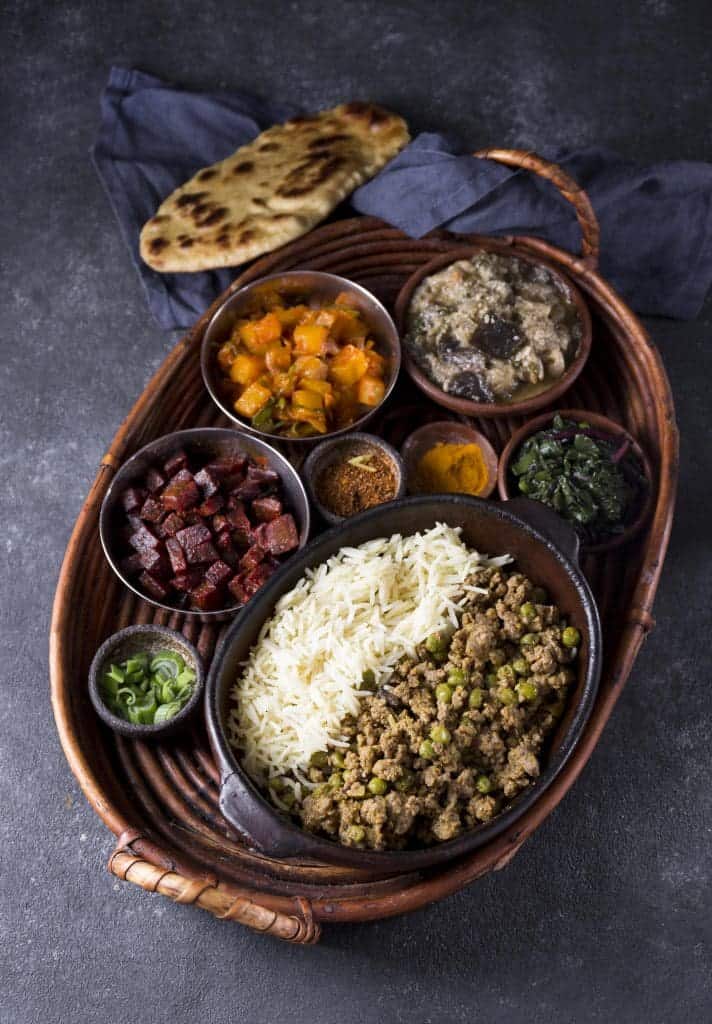
“Pahari” in India refers to the culture, traditions, and cuisines of the mountainous regions, especially from the Himalayan belt. The term encapsulates a variety of regional cuisines including those of Himachal Pradesh, Uttarakhand, and Jammu & Kashmir in the northern part of India, and some parts of the Northeast states like Sikkim, Arunachal Pradesh, and some regions in Nepal.
Pahari cuisine offers a gastronomic experience that truly embodies the charm and simplicity of the Himalayan lifestyle. It is a cuisine shaped by the rugged terrain and the cold climate of the region, which influences both the ingredients used and the style of cooking.
The dishes are predominantly based on locally sourced produce such as red rice, lentils, seasonal vegetables, and hearty meats. They’re often slow-cooked to enhance the flavours and nutritive value, mirroring the slow-paced life in the mountains. One of the key features of Pahari cuisine is the subtle use of spices, which adds warmth without overpowering the natural flavours of the ingredients.

The use of fermented foods and pickles is also quite common, given the region’s long, harsh winters when fresh produce is scarce. This balance of nutrition, taste, and sustainability makes Pahari cuisine not just unique, but a testament to the resilience and resourcefulness of the mountain communities.
Let’s explore 10 of the most exciting Pahari dishes that you must try:
Bhutwa: This dish is a popular delicacy in Uttarakhand. Bhutwa is made from goat intestines, which are thoroughly cleaned, boiled, and then sautéed with a medley of local spices like turmeric, red chilli, coriander, and garam masala. The dish carries a unique texture and earthy flavours, showcasing the rusticity of the mountains in each bite.
Tibetan Market Ka Thupka: This aromatic soup-based noodle dish originates from Tibet but is a heartwarming delicacy served across mountainous regions. Found in various Tibetan markets around the states of Himachal Pradesh, Uttarakhand, and the Northeast, Thupka embodies a mixture of subtle flavours from its vegetable or meat broth, combined with noodles, and accented by spring onions and other local greens. It’s a hearty bowl of warmth, especially during the harsh winter months. It is indeed a popular street food of Himachal Pradesh on account of its wholesomeness as a complete meal.
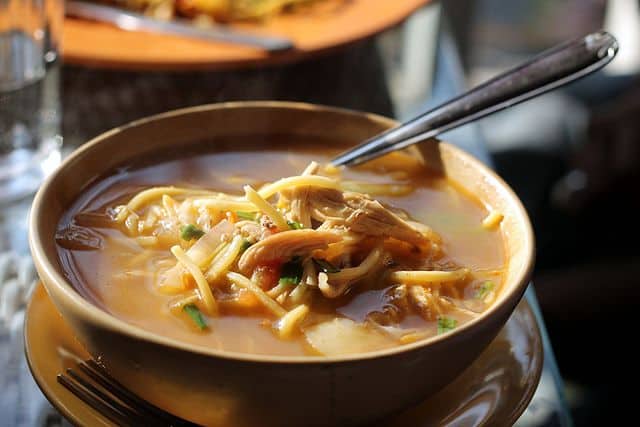
Image Credit: Arunabha Goswami via Wikimedia Commons
Mash Ke Vade: This dish is a delicacy from Himachal Pradesh and is made from black lentils (mash ki dal). These lentils are soaked overnight, then ground to a coarse paste, mixed with spices, shaped into patties, and deep-fried to golden perfection. Mash Ke Vade, served with yoghurt and chutney, offers a blend of flavours and textures that is both comforting and satiating.
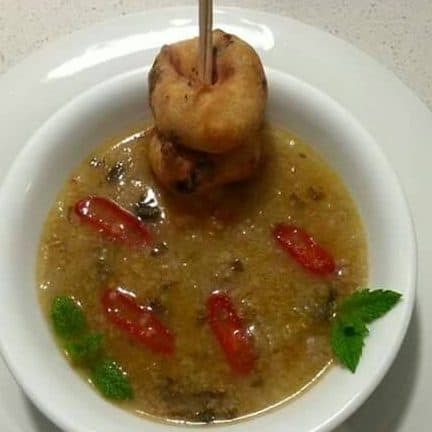
Image Credit: Affaf Ali
Paltan Bajar Ke Momo with Tomato Till Ki Chatni: This is a popular street food, especially in Dehradun’s Paltan Bazaar in Uttarakhand. The momos here are distinct and more flavorful, filled with seasoned minced meat or vegetables, and steamed to perfection. What makes them unique is the accompanying Tomato Till Ki Chatni (sesame tomato chutney), a spicy and tangy sauce that perfectly complements the soft, delicate momos.

Murgi Shikar: This dish is at the top of the Kumaoni food list and is not restricted to its origin in Uttarakhand. Murgi Shikar is a chicken curry, but what sets it apart is the use of local herbs, spices, and cooking techniques. The chicken is slow-cooked in a pot, allowing the flavours to fully permeate the meat, resulting in a dish that’s aromatic and full of rustic flavours.
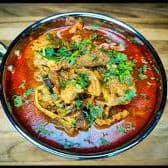
Bhatt Ki Churkani: Another gem from Uttarakhand, Bhatt Ki Churkani is a traditional dish made from a variety of black soya beans known as ‘Bhatt’. The beans are cooked and mashed, and then a tempering of local spices is added to bring about a depth of flavour. The ‘Churkani’ refers to the thick consistency of this preparation. It is a wholesome and protein-rich dish, usually enjoyed with rice.
Chonke Bhatt: This is a traditional Himachali dish made from black soybean (Bhatt). The dish gets its name ‘Chonke’ from the technique of tempering (tadka or chonk) used in the preparation. The soybean is boiled and then tempered with ghee, cumin seeds, asafoetida (hing), and other spices. This dish, with its earthy flavours and high protein content, is a staple in the local diet.
Jholi: From the land of Uttarakhand, Jholi is a unique curry made with buttermilk or curd, gram flour (besan), and local spices. The dish gets its name from the process of slow cooking, allowing the ingredients to simmer together to create a rich, comforting curry. It is usually served with rice and offers a sour and spicy flavour profile.
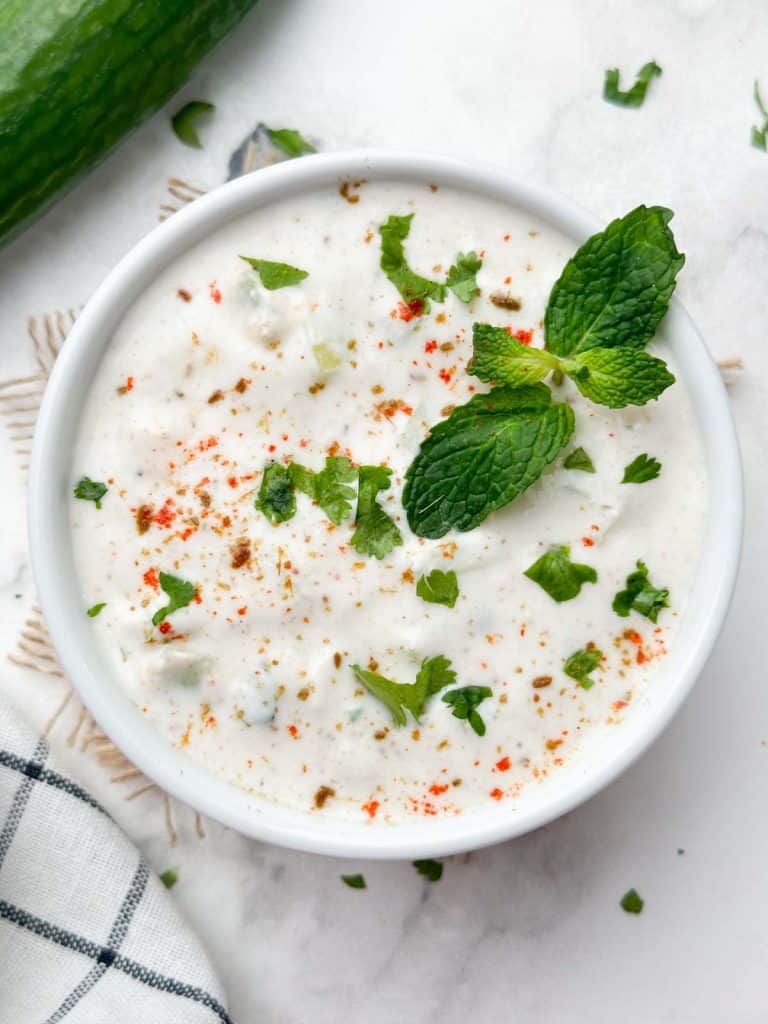
Kakadi Ka Raita: A popular side dish and traditional food of Himachal Pradesh, Kakadi Ka Raita is made from cucumbers (kakadi), curd, and a handful of spices. The cucumber is grated and mixed with whisked curd, and a tempering of mustard seeds, curry leaves, and dried red chillies are added on top. This raita provides a cooling balance to the other spicy dishes and is a refreshing accompaniment to meals during the hot summer months.
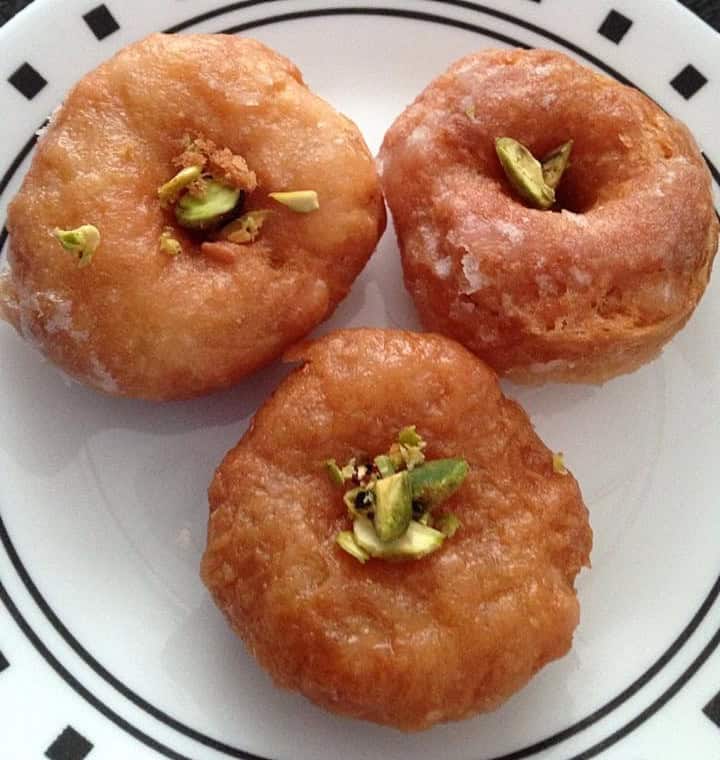
Image Credit: Amit154 via Wikimedia Commons
Balu Shahi: Finally, to satisfy the sweet tooth, Balu Shahi is a famous dessert from Himachal Pradesh.
It’s a kind of doughnut made from all-purpose flour (maida), yoghurt, and sugar, deep-fried and soaked in sugar syrup. This dessert is rich, sweet, and melts in your mouth, providing a perfect end to a hearty Pahari meal.
Mandal: Mandal, a quaint town in Uttarakhand, has its own distinct take on Pahari cuisine that reflects the culinary ingenuity of its inhabitants. One of the region’s beloved specialities is a unique dish made with locally grown oranges, sweetened with honey and sugar, and seasoned with a dash of salt and a variety of local spices.
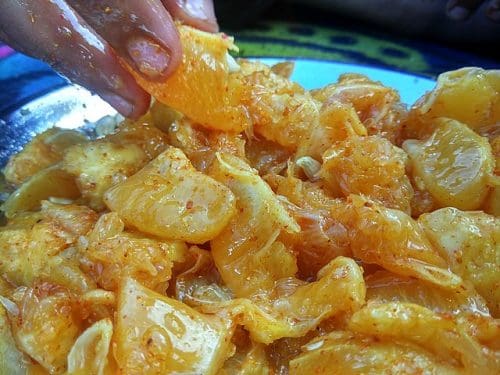
This unconventional blend results in a dish that is an exciting melange of sweet, salty, spicy, and tangy flavours, all in one bite.
What makes it even more remarkable is how this preparation utilizes the bounty of the region’s orange orchards, showcasing the traditional ethos of sustainable and seasonal eating. It is an exquisite example of how Mandal’s Pahari cuisine combines simplicity with bold flavours, creating dishes that truly epitomize the region’s rich culinary heritage.
With every bite, these Pahari dishes transport you to the serene mountains and offer a glimpse into the local lifestyle and food habits of the region. They encapsulate the unique terroir, the changing seasons, and the local produce of the Pahari regions, providing an experience that’s both delightful and distinct.
No wonder these dishes continue to be relished. Their unmatched simplicity and wholesomeness, are imbued with a depth of flavour that speaks of the mountains and the spirit of its people. There’s so much more than the wonderful flavours – here is a cuisine that invites you to explore the fascinating interplay of culture, geography, and food in the Himalayas, promising an enriching gastronomic journey.
No matter what you prefer – a hearty lentil dish or a subtly spiced meat curry, tasting Pahari cuisine is an experience that is as warming to the soul as it is pleasing to the palate.
Read more: Food Voyager



